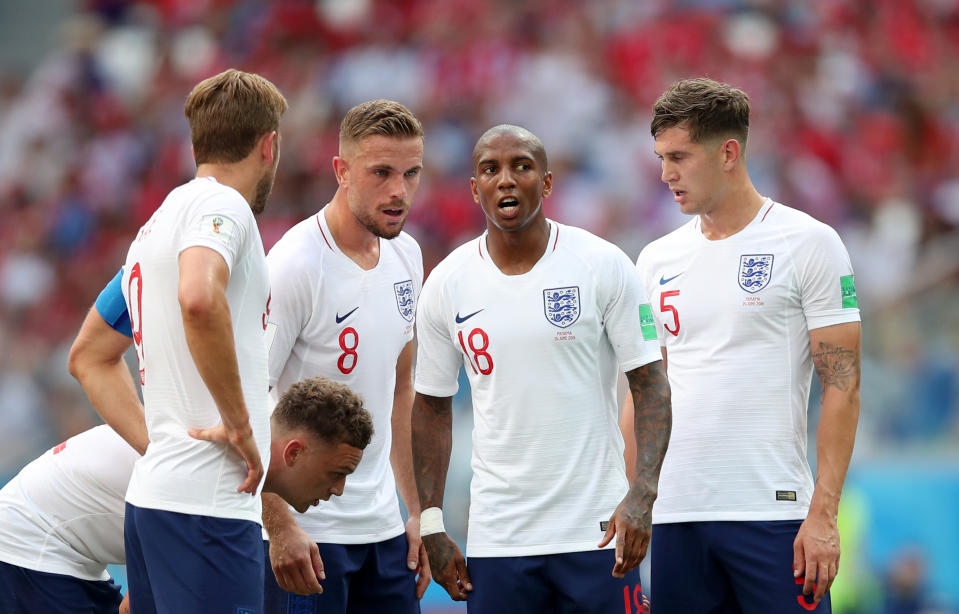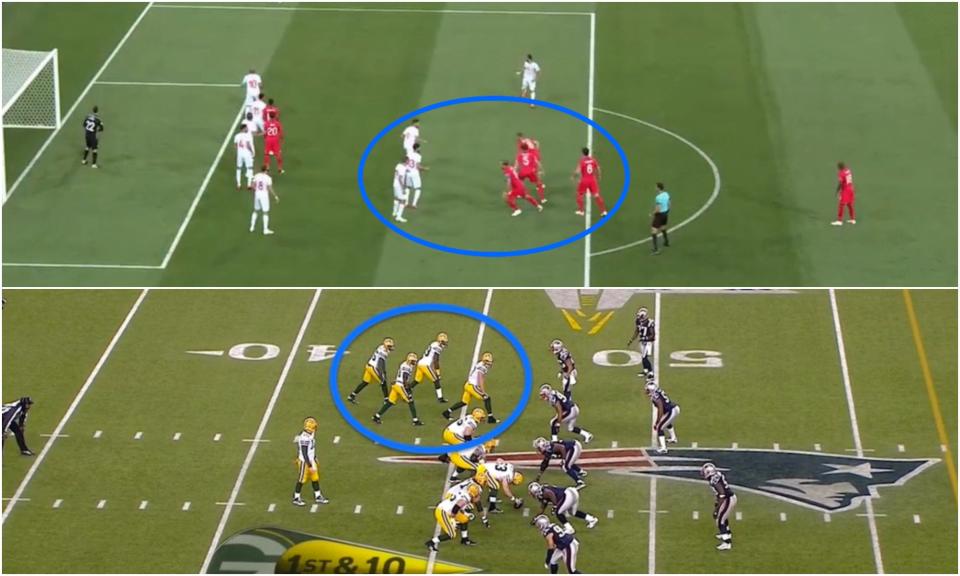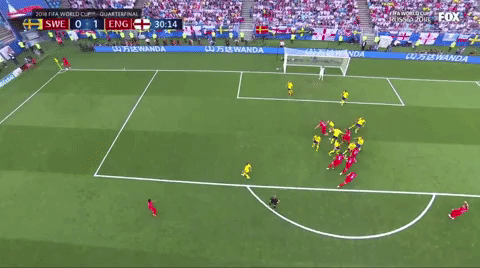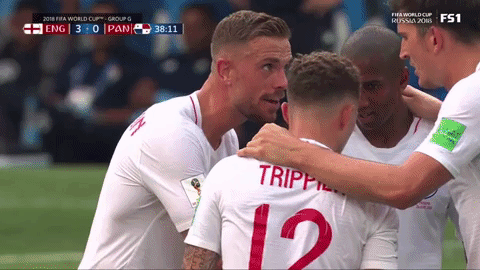How the NFL and NBA helped inspire England's World Cup run
Of soccer’s many reputations, one is as an unscripted sport. It is part of the beauty; part of the unpredictability; part of the drama. But at the 2018 World Cup, the game has been more scripted than ever. And nobody has scripted it better than England.
Soccer’s one scripted moment is the set piece – corners, free kicks and the like – and it has long been a market inefficiency. Set plays account for roughly a third of goals in the modern game. They’ve accounted for 42 percent at the 2018 World Cup.
And yet they rarely account for even 20 percent of training time. Sometimes not even 5 or 10. For over a century, they have been neglected, written off as random, much like the rest of the sport.
England, however, is in its first men’s World Cup semifinal since 1990 because it recognized that neglect equaled opportunity. Since taking the Three Lions’ reins in the wake of scandal, manager Gareth Southgate has prodded at the inefficiency. He went in search of ways to exploit it. And on multiple occasions, his search landed on two peculiar places: the NFL and NBA.

Southgate’s hunt for a competitive edge brought him to the United States – to meetings with NFL teams, to Super Bowls, and to a Saturday night NBA snoozefest between the Minnesota Timberwolves and New Orleans Pelicans. But Southgate wasn’t snoozing. As broadcaster Darren Fletcher, one of Southgate’s companions on the trip, tells it:
“Gareth is very open to other sports, and what he can learn from them. … We are chatting on the train [to the Timberwolves game]. I asked him what he would get out of it. He said he was interested in that in basketball, there is five-vs.-five on the court, but somebody would always get free under the basket. So he wanted to know how they screened and blocked so they could get the space in such a small area. He wondered if he could learn something and employ it in set pieces in the penalty area.”
Based on the evidence of the World Cup, he did; and he has.
England’s NFL-esque bunch set
Spread offenses in American football are all about numbers. They’re about boiling an 11-on-11 game down to 6-on-6s, or 3-on-3s, or 1-on-1s. Or, even better, 6-on-5s or 3-on-2s. If a zone-based defense were only willing to send a maximum of three defensive backs to one side of the field, most offenses would send four receivers. They’d find a way to get the ball in the hands of the (inevitably open) fourth.
That’s essentially what England did against Tunisia, which defended with five men across the six-yard box and three at the penalty spot. So England sent its wide receivers out in a “quads bunch” set:

Tunisia’s three defensive backs picked up Jordan Henderson, John Stones and Harry Kane. Harry Maguire found himself with a free header:

England had clearly scouted the Tunisians, picked out the flaw in their marking scheme, and drawn up a plan to beat it. Another penalty-spot overload on the game’s second corner bore fruit:
What a start for the Three Lions!
Harry Kane taps it home to put England up 1-0 early against Tunisia. pic.twitter.com/ECe7m0bRrc
— FOX Sports (@FOXSports) June 18, 2018
Changing the point of attack
Another key facet of NFL offenses is misdirection. It’s everything from a blocking scheme and a running back’s jab step to a wide receiver double-pass.
It’s about changing the point of the attack to catch the defense off guard. And that’s exactly what England did against Panama – twice on one play.
With a free kick to the right of center, Panamanian defenders were expecting Kieran Trippier to loft it to the left side of the box. Little did they know that Henderson was Julian Edelman. He checked back to the ball, took Tom Brady’s – er, Tripper’s – pass, and sent it back to the right.
But there was an additional level: all defenders on the left had been sucked toward Henderson and the initial pass. That left Raheem Sterling and Stones free to finish off a beautifully worked goal:
You get a goal! And you get a goal! AND JOHN STONES GETS TWO! pic.twitter.com/C7ouxVpUPz
— FOX Sports (@FOXSports) June 24, 2018
There’s basketball symmetry here as well. In a way, the first phase was the equivalent of a quick ball reversal to create an angle for a post-entry pass, with a big man sealing his defender on the block.
Oh, and it wasn’t the only hoops play England used against Panama.
Ashley Young’s back screen
Ashley Young is basically English Set Piece Draymond Green. He takes some corners and free kicks. He’ll have the occasional shot. When he’s doing neither of those two things, he’s setting back screens at the top of the D for Stones:

These are common basketball actions that NBA players know how to defend. But soccer players aren’t exactly weak-side help defense experts. So the simplest of space-creation ploys work.
England’s stack
Like, literally, the simplest. If you ever played basketball as a child, chances are one of the first out-of-bounds plays you were taught was “stack.” And England used it to score the most important goal of its tournament thus far:
Penalty to England! pic.twitter.com/uEhUAEm8Jn
— FOX Soccer (@FOXSoccer) July 3, 2018
It’s actually one of Southgate’s go-to actions. The concept in both basketball and soccer: Four players form a “stack” or line, as tight as possible. (Immature middle-schoolers might giggle about how it looks like a grind chain.) The players then break in various directions, using one another to block off defenders and elude them.
When defenders lose touch, they get buried, and England players get free runs at the ball:

When they try to stay stuck to the attacker, as Colombia’s Carlos Sanchez did, they run the risk of conceding a penalty. They also run the risk of getting picked off. Henderson’s Tunisian marker found that out when he ran into Stones’ butt – he was only bailed out by an overhit Trippier cross:

England uses some form of the stack or the bunch set on most of its corners. Each time, though, it gets something different out of the alignment.
Creating and exploiting mismatches
On England’s first corner against Sweden, the usual suspects were clustered near the top of the box: Kane, Stones and Maguire. But a fourth visitor joined them: Sterling, the smallest player on the pitch.
The purpose here, as is the purpose of so many on-ball screens in the NBA, was presumably to create a mismatch. Sterling was marked by Sweden’s weakest aerial defender (attacking midfielder Emil Forsberg), just like guards start on guards and bigs start on bigs in the NBA. By drawing Sterling’s marker into the mix, and forcing defenders to switch, England got its big matched up on Sweden’s guard, and capitalized:
Maguire simply overpowered Forsberg, like Joel Embiid would Kyrie Irving. Here’s a better look at the Swedish confusion:

And when the bigs don’t finish, as was the case against Tunisia, England has Kane as its savvy offensive rebounder to clean up scraps.
The actual NFL and NBA influence
We could go on and on with the comparisons. England even huddles before the odd free kick:

It uses pre-snap (pre-free kick) signals – one or two hands in the air to declare the taker’s intention. It uses decoys and attention-diverting discussion. Heck, its two deliverymen wear No. 12 and 18, which just so happen to be the numbers of the three best NFL quarterbacks of the 21st century.
In reality, all of this represents a very small sliver of the reasons England is within two games of a second World Cup title. Southgate also consulted a dozen other sports, from rugby to canoeing. And many of the techniques on display above aren’t revolutionary. Pick plays and bunch sets have been used in soccer for years.
But Southgate, through a spokesman, confirmed to the Wall Street Journal that he had indeed picked up ideas from his American expeditions. And set pieces are responsible for seven of England’s 11 goals in Russia. So it’s probably safe for basketball and American football to take a bit of credit.
– – – – – – –
Henry Bushnell covers global soccer for Yahoo Sports. Have a tip? Question? Comment? Email him at henrydbushnell@gmail.com, or follow him on Twitter @HenryBushnell, and on Facebook.
More World Cup on Yahoo Sports:
• Why soccer players flop
• The dark side of Croatian soccer
• The corruption scandal that enabled England’s run
• What does ‘football’s coming home’ even mean?


